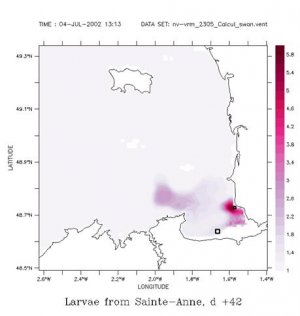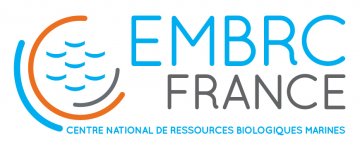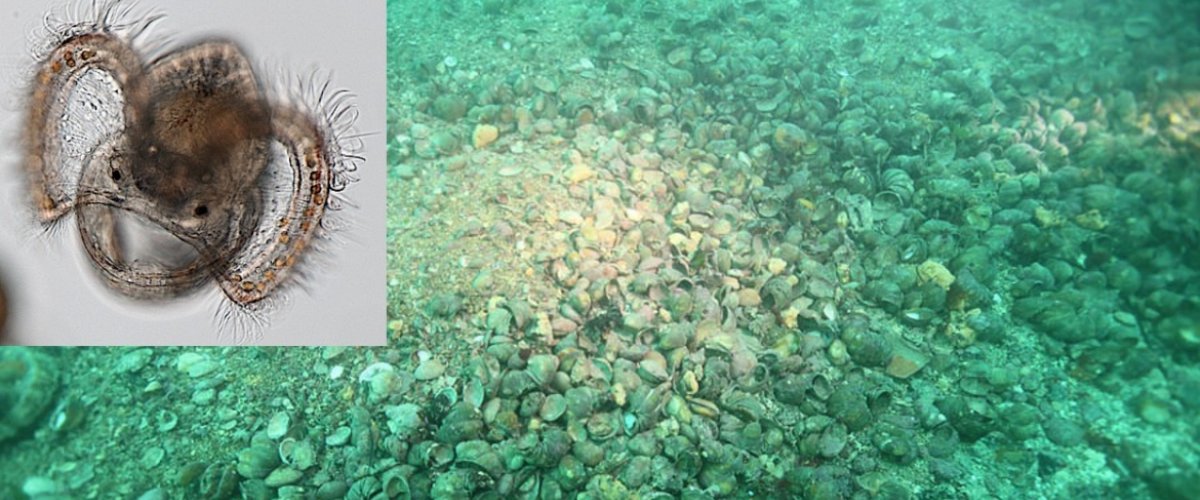Topic 1 - Dispersal ecology
The team develops and uses bio-physic models and bio-geochemical markers to study larval dispersal in a number of species having an ecological, patrimonial, or economical interest.
- The Divco team develops numerical models and bio-geochemical analyses to study the larval phase of marine invertebrates.
- Bio-geochemical markers are relatively underexploited with the larval stage, but they could help studying the dispersal phase of many marine invertebrates. They could complement other approaches to larval dispersal such as population genetics in order to validate model predictions. Genetic approaches to dispersal are particularly problematic with many marine invertebrates that have enormous effective population sizes and large migration rates.
- Regarding larval transport models, we focus particularly on:
- taking into account the traits that affect the behavior of larvae during dispersal
- developing models that might be used for comparison or in combination with results from bio-geochemical tracking and genetics.
- These studies aim at better estimating population connectivity in the context of species management (e.g. Pecten maximus), climate change, and biological invasions (e.g. Crepidula fornicata).









